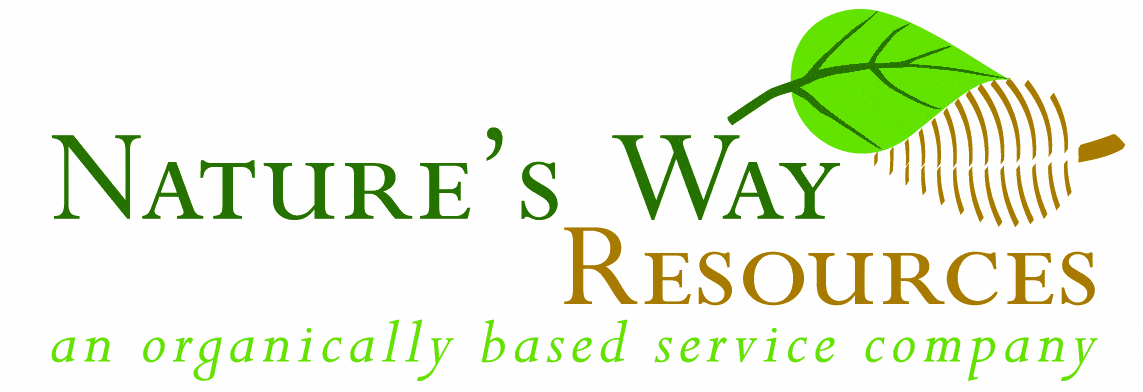By: John Ferguson
Last week we talked about a few other types of mulch that are available. This time we are going to continue our discussion on some of the other types of organic mulches a gardener may want encounter and want to use.
Biodegradable Weed Barriers – New biodegradable weed barrier mulches are entering the market that
are made from recycled paper and cardboard. Better ones contain holes for air and water penetration
and will last about one growing season. A few examples are:
Paper + Poultry Manure – This is a medium quality mulch that should be applied 3-4″ layer thick. It is
easy and quick to apply, breaks down easily, provides some nutrients, is made from recycled materials,
is a good soil amendment, and it has been reported that the waste paper has some herbicidal effects
on weeds. It may be expensive, and it does not support the variety of beneficial microbes as other
organic mulches. Products from some producers may contain a high salt content. If supplemental
nitrogen is not added, it may cause a temporary nitrogen tie-up in the soil. If used 1″ thick as suggested
by some advertising literature, it will not provide needed thermal protection against excessive heat or
cold that would be the case with other mulches. High water absorption properties may prevent water
from reaching root zones and result in too much water being held in the mulch layer increasing the
possibility of diseases.
Note: This mulch is relatively new to market, it only lasts one season, is made from recycled telephone
books, newspaper and poultry manure (one product is produced by Tascon, Inc. of Houston using
techniques developed by the Agricultural Research arm of the USDA called Enviroguard). Paper fiber is
mixed with poultry manure and heat dried at 160 degrees Fahrenheit to kill pathogens, then extruded
into pellets 3/16″ thick by 1″ long. Pellets will fluff up upon wetting and will hold 4-5 times their weight
in water. This product is still in the early stages of testing and development and is designed for
agricultural use. It has the potential to be a very useful product for agriculture as experience is gained
in usage.
Note: Research at Auburn University has found that recycled paper mulches often contain toxic forms
of Aluminum that was used in the manufacturing of the paper (newspaper, magazines, yellow pages,
etc.). As the paper decomposes the Aluminum leaches into the soil and prevents plants from absorbing
phosphorus, hence greatly reducing the plants growth. This problem is worse in acidic soils and with
shallow rooted plants.
Note: Some of these type mulches are reported being used with ammonium sulfate as a fire retardant
and with copper (Cu) compounds to slow down the decomposition rates.
Note: Poultry manure (unless organic) has high levels of arsenic in it along with lots of salts which often
cause problems in clay rich soils.
Occasional usage should not be a problem. However, frequent use can lead to soil problems and
eventually insect and diseases in our plants.
Pelletized Recycled Paper – A special purpose mulch of medium to poor quality depending on the
source materials it is made from. Generally requires a 3-4″ thick layer. It is easy and quick to apply, is
available in bags, breaks down easily, provides some nutrients, is made from recycled materials, makes
a good soil amendment, and it has been reported that the waste paper has some weed suppression
effects as it has a very high C: N ratio. Early studies indicate that one of the best uses is in the nursery
industry for weed control in container grown plants as it naturally suppress weeds without the need
for dangerous herbicides (outperforms crumbled paper and is easier to use). It does not support the
variety of beneficial microbes as the better organic mulches do. Products from some producers may
contain a high salt content. Due to the high C:N ratio, if supplemental nitrogen is not added, it may
cause a temporary nitrogen tie-up in the soil. If only used 1″ thick as suggested by some advertising
literature, then it will not provide needed thermal benefits against heat or cold or the weed
suppression of other types of mulch. Also the high water absorption properties may prevent water
from reaching root zone and cause too much water to be held in the mulch layer increasing the
possibility of diseases. Repeated use can cause soil chemical balance problems.
Paper (Other) -Colored paper, coated paper, etc. are being researched as specialty mulches for use in
agriculture. By coloring or coating the paper the reflectance, light transmissibility, biodegradability and
other physical properties can be altered. These properties may be varied depending on the need of the
crop. More on how these types of colored mulches affect plant growth in future issues. Mainly used in
commercial agriculture.
Hydraulic Mulches: These are a group of special purpose mulches often used commercially for hydro
seeding and vegetation establishment. These are often used in a water based slurry and mixed with
tackifiers (works like a glue) to help hold seed and fertilizer pellets to the soil for vegetation
establishment. They can be applied with spraying equipment to cover large areas quickly. These
mulches are often used to prevent erosion while vegetation is being established. There are dozens of
brands and variations produced by many companies.Often seen as the blue-green product after road
construction. These mulches are commonly used as they are relatively cheap, but they are not the
most effective choice.
Wood Cellulose Fiber – This mulch is derived from trees and sometimes recycled newspaper or
cardboard. Sometimes polyester or other synthetic fibers may be added for greater strength. This
mulch is also used in combination with straw, hay or other organic mulch. For many years this was the
accepted way of stabilizing soil and planting grass to prevent erosion. Many new studies from Texas
A&M and others have found that recycled native mulches and/or compost work better and at lower
total cost.
Corn Stover fibers – Derived from corn stalks, the ground up stalks often gives longer fibers which may
hold better for erosion control.
Erosion Control Blankets: These are special purpose mulches made from various types of organic
material (fibers) held in place by a mesh (often plastic or polyester fiber). They are used commercially
to prevent erosion on steep slopes and disturbed soils. The fiber may be straw, shredded wood, coir,
cotton, hemp, or other organic material. These are made into blankets that are shipped in rolls. To
apply, the blanket is unrolled at the bottom of a slope and is pinned to the soil. The second roll is
applied above the first with a small overlap of the material like shingles on a house. Sometimes the
blankets will also contain seed and fertilizer to prevent nutrient tie-up.
Other: Depending on where you live, other types of mulches may be available at little or no charge.
Spent brewery hops, apple pumice, blueberry husks, pole peelings from lumber mill, old carpet (cotton
or wool will also biodegrade), etc. Each offers benefits and problems, best to contact a local
agriculture extension office for use on one’s soils.

